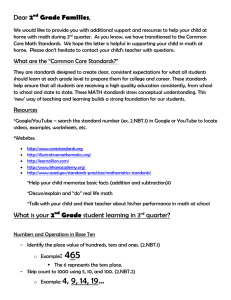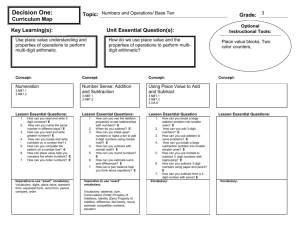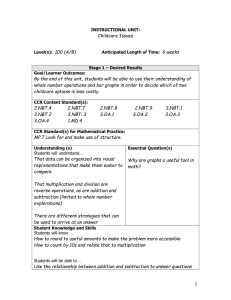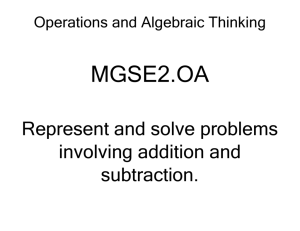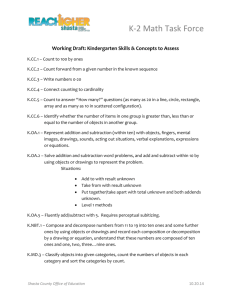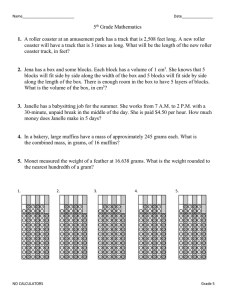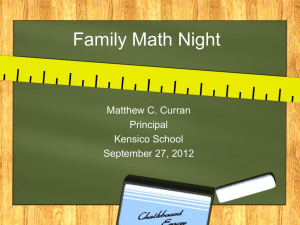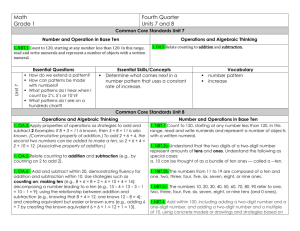1st Grade Math Proficiencies (approved 9-22-11)
advertisement
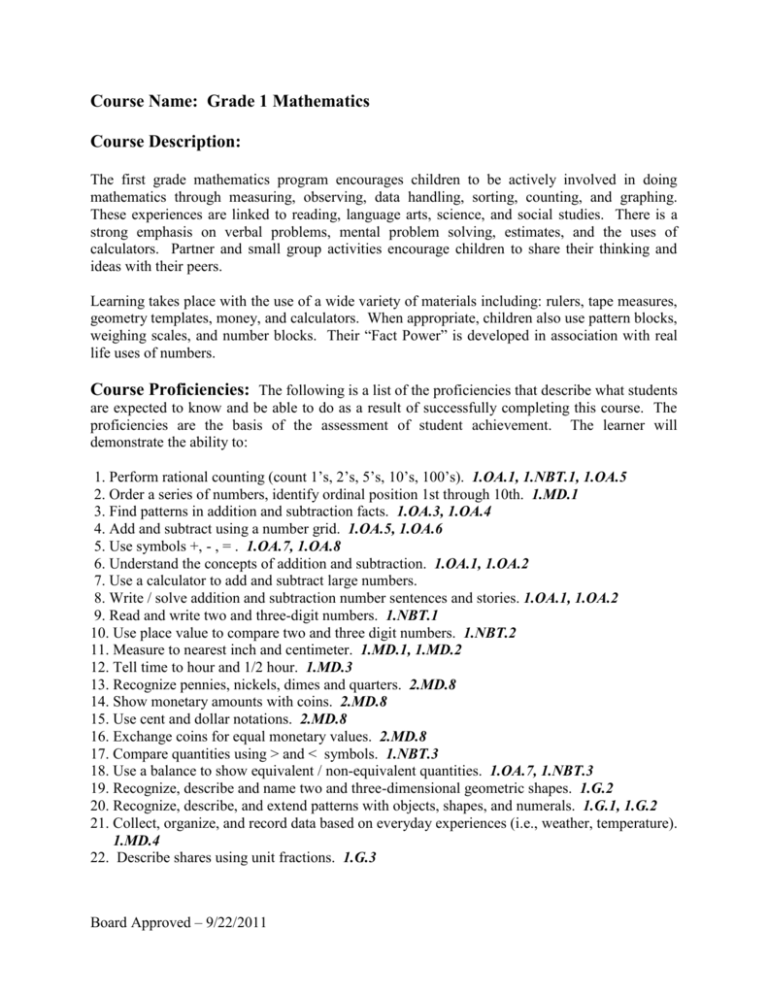
Course Name: Grade 1 Mathematics Course Description: The first grade mathematics program encourages children to be actively involved in doing mathematics through measuring, observing, data handling, sorting, counting, and graphing. These experiences are linked to reading, language arts, science, and social studies. There is a strong emphasis on verbal problems, mental problem solving, estimates, and the uses of calculators. Partner and small group activities encourage children to share their thinking and ideas with their peers. Learning takes place with the use of a wide variety of materials including: rulers, tape measures, geometry templates, money, and calculators. When appropriate, children also use pattern blocks, weighing scales, and number blocks. Their “Fact Power” is developed in association with real life uses of numbers. Course Proficiencies: The following is a list of the proficiencies that describe what students are expected to know and be able to do as a result of successfully completing this course. The proficiencies are the basis of the assessment of student achievement. The learner will demonstrate the ability to: 1. Perform rational counting (count 1’s, 2’s, 5’s, 10’s, 100’s). 1.OA.1, 1.NBT.1, 1.OA.5 2. Order a series of numbers, identify ordinal position 1st through 10th. 1.MD.1 3. Find patterns in addition and subtraction facts. 1.OA.3, 1.OA.4 4. Add and subtract using a number grid. 1.OA.5, 1.OA.6 5. Use symbols +, - , = . 1.OA.7, 1.OA.8 6. Understand the concepts of addition and subtraction. 1.OA.1, 1.OA.2 7. Use a calculator to add and subtract large numbers. 8. Write / solve addition and subtraction number sentences and stories. 1.OA.1, 1.OA.2 9. Read and write two and three-digit numbers. 1.NBT.1 10. Use place value to compare two and three digit numbers. 1.NBT.2 11. Measure to nearest inch and centimeter. 1.MD.1, 1.MD.2 12. Tell time to hour and 1/2 hour. 1.MD.3 13. Recognize pennies, nickels, dimes and quarters. 2.MD.8 14. Show monetary amounts with coins. 2.MD.8 15. Use cent and dollar notations. 2.MD.8 16. Exchange coins for equal monetary values. 2.MD.8 17. Compare quantities using > and < symbols. 1.NBT.3 18. Use a balance to show equivalent / non-equivalent quantities. 1.OA.7, 1.NBT.3 19. Recognize, describe and name two and three-dimensional geometric shapes. 1.G.2 20. Recognize, describe, and extend patterns with objects, shapes, and numerals. 1.G.1, 1.G.2 21. Collect, organize, and record data based on everyday experiences (i.e., weather, temperature). 1.MD.4 22. Describe shares using unit fractions. 1.G.3 Board Approved – 9/22/2011 Assessment: At grade one, student progress in mathematics is measured using a variety of tools and resources. These may include checklists of skills, teacher observations, teacher-made assessments, performance on “explorations” and end of the unit review and assessment activities. A performance-based end of year assessment tool is used to measure overall student progress relative to grade level expectations. Board Adopted Materials: Teaching Resources and Related Student Materials: Title: Author: Publisher: Copyright: Everyday Mathematics University of Chicago School Mathematics Project McGraw-Hill Companies, Inc. 2012 Board Approved – 9/22/2011
